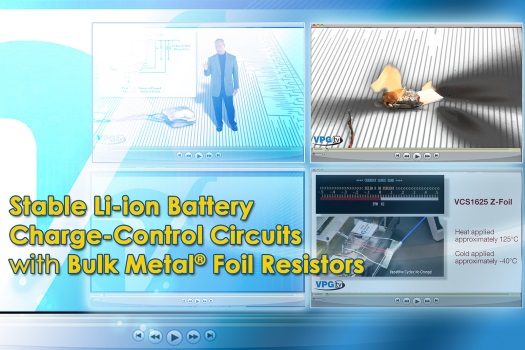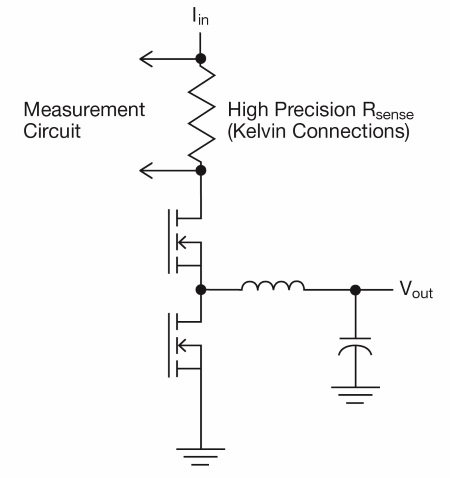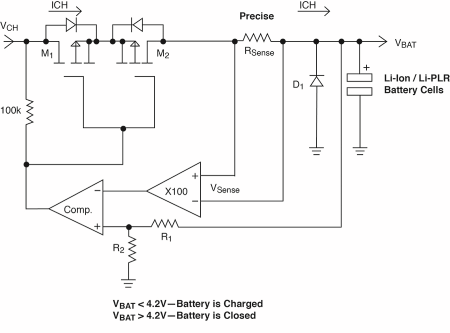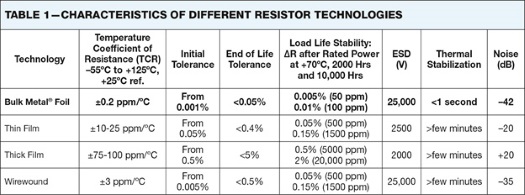By YUVAL HERNIK,
Seniorr Director of Application Engineering
Vishay Precision Group (VPG)
www.vpgsensors.com
Lithium-ion (Li-ion) batteries are well established in portable consumer electronics and now also gaining popularity in military and advanced civilian avionics, as well as space applications. In all these systems they provide higher capacity for the same size and weight than older battery chemistries; in other words, they have a much higher energy density. As their scope of applications has expanded—from consumer products to satellites, land vehicles, airplanes, alternative energy, smart grids, civilian avionics, and energy grid storage—ever more stringent requirements have been placed on these batteries, especially in terms of cell safety and lifetime.
The black swan event is considered an event or incident that deviates beyond what is normally expected of a situation and that would be extremely difficult to predict. Black swan events are typically random and unexpected but in some cases they can be prevented by identifying a system’s vulnerabilities. For example, previous incidents with the Li-Ion batteries on the ground and in the air represent black swan events because none of models could have predicted these events and their subsequent effects. But now we better understand the vulnerabilities of systems powered by these batteries and can take steps to eliminate them in the future.
Several years ago VPG Foil Resistors (VFR) decided to focus on developing resistive current sense devices with Kelvin connections that would complement the growing use of lithium-ion batteries. The contributions of VFR were mainly to provide high-precision current sense Bulk Metal Foil resistors to allow quick and accurate evaluation of battery life and safety. Current sensing circuits provide the data needed by battery control circuits to operate properly, and Bulk Metal Foil resistors are among the fundamental building blocks of these circuits. In this application, a controlling circuit monitors current flowing through a current sense resistor as a voltage drop across the resistor and directs parameter changes to ensure that optimum circuit performance is maintained.
Even if the end application doesn’t normally require the high precision, stability and reliability provided by the Bulk Metal Resistors they can enhance the protection against “black swan events” especially when Li-Ion batteries are the energy source. End products may use either external discrete resistors or resistors integrated into the controller IC, but for prototype development it is always recommended to use discrete precision resistors.

Fig. 1: Safer Li-Ion battery charge control Highlighted in this video
Figure 2 shows common input current sense resistor configurations with the voltage measured across the discrete Bulk Metal Foil current sense resistor in order to measure the exact current flowing into the converter unit. Sometimes you can increase power efficiency by putting the high precision current sense resistor on the input side, rather than the output side of the sensing circuit. In either case, selection of the proper current sense resistors is vital for the stability, extended battery life, and optimum performance of portable and battery operated equipment.


Fig. 2: Common input precision current sense resistor styles.
Sensing circuit applications
Power supplies, battery chargers, and dc/dc converters are all among the analog applications that use sensing circuits. The charging process goes through several critical phases to ensure the battery is charged to its maximum capacity while at the same time following certain safety rules to avoid explosion or fire.
Li-ion battery chargers are in fact complex and challenging circuits. They require accurate current and voltage settings and monitoring as well during the battery charging by constant current. If these accuracy requirements are not met, the charger will fail to complete the battery charge by missing the current termination point, which permanently reduces battery performance.
The Li-ion battery charging current needs to be monitored by precision current sense resistors at a known current level until it reaches its final cell voltage. At this point, the charger circuitry should switch over to constant voltage mode, and provide the current necessary to hold the battery at this final voltage. Thus, the charger must be capable of providing stable control loops for maintaining either current or voltage at a constant value, depending on the state of the battery.
When working with Li-ion batteries for high grade projects, especially those where lives are at stake or battery packs are being used in remote locations, there is little room for mistakes. The main design challenge in Li-ion charge circuits is to find the optimal point between overcharging, which could result in battery failure, and undercharging by more than a certain percentage, which results in reduced capacity. Bulk Metal Foil resistors achieve the necessary accuracy in the charge-control circuitry. In addition to the high-precision current sense resistors, the controller also has a precision voltage reference and a low-offset high-gain feedback precision amplifier. The combined errors of all these active and passive components should be less than a total error budget of ±1%. (see Table 1).

As mentioned above, continuous accurate and stable monitoring of input and output current requires a low but very precise resistance value with low temperature sensitivity for reliable feedback to the charger IC. The need for safety was re-emphasized in the latest near-catastrophic incidents that involved the charging of Li-ion batteries. These motivated designers of sensitive applications, especially in the avionics industry, to search for more precise and reliable commercial off-the shelf (COTS) resistors with which to accurately monitor the battery voltage while connected to the charger. Bulk Metal Foil current sense resistors with Kelvin connections, low TCR, and low thermal EMF, such as the VCS1625Z (Z-Foil), VCS1610Z (Z-Foil), and the CSM series, provide the accuracy and stability required for the complete charging cycles of lithium-ion batteries.
Under certain uncontrolled conditions such as extreme current charging or discharging, Li-ion cells can be dangerous and may explode or overheat if provisions are not made for their proper use. One of the main concerns with excessive discharge is the possibility that the cells inside the battery might short-circuit, a permanent, irreversible event. Overcharging can also be critical because it can destroy each cell by overheating, resulting in additional catastrophic events.
A Li-ion battery can be fabricated by connecting two or more cells in series and in parallel to obtain a larger capacity with the same float voltage. In most of the high-grade applications, the battery may be charged and discharged for hundreds and thousands of cycles. As this occurs, it may have a different impact on each of the cells. The cells may become mismatched. If this phenomenon is not corrected with precision analog circuitry, one or more cells may become undercharged or overcharged, either of which can lead to failure of the batteries and the overall system in which they are being used. Designers need to keep this in mind when considering the overall long-term costs of a system, and the consequences of attempting to save on up-front assembly costs.
Advertisement
Learn more about Vishay Precision Group





